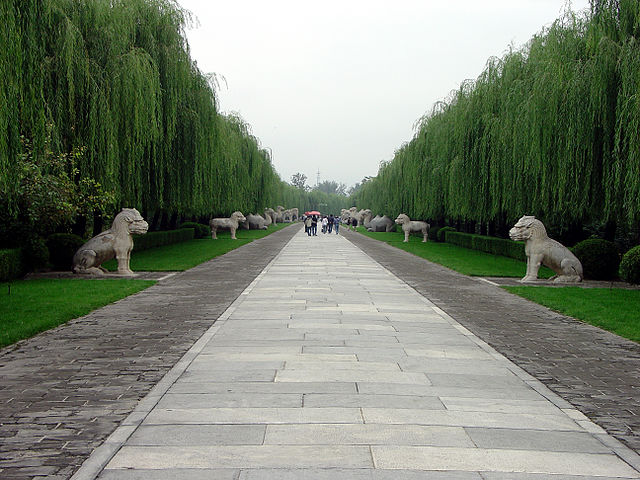
Spirit Road
Ming Tombs, Beijing
The northern half of the spirit road is lined with a larger-than-life "honor guard" of colossal animals (24 pairs) and humans (12 pairs), comprising the best-preserved monumental stone sculptures of the Ming dynasty. The road gently curves, according to fengshui principles, in order to defeat evil influences that could only travel in straight lines.
The order of the figures, from south to north, is: first a pair of kneeling lions, then a pair of standing lions, followed by pairs of kneeling and standing xiezhi, camels, elephants, qilin, and horses, then: four pairs of military officials, four pairs of civilian officials, and lastly four pairs of meritorious officials. Unlike the animals, all the humans are standing. This is whimsically explained by saying that the kneeling animals are "off duty," but the humans are not allowed to rest.
Taken as a whole, the figures constitute a microcosm of the emperor's world: camels, elephants, and horses represent transportation, trade and the frontier; officials administer the empire; and soldiers, lions, xiezhai and qilin protect the state and the sovereign. A similar scheme is seen in the earlier Xiaoling tombs at Nanjing (14th century, beginning of the dynasty), although the "meritorious officials" group was not present at Xiaoling.


